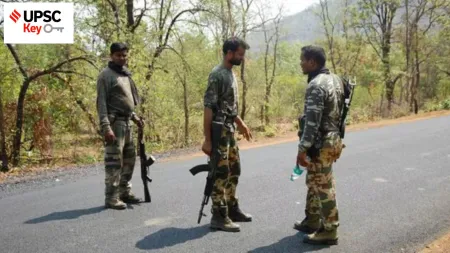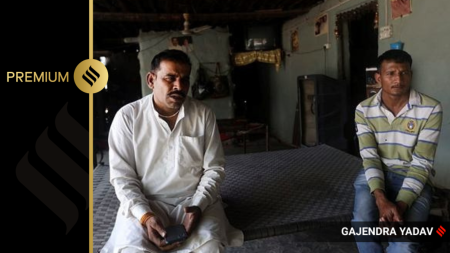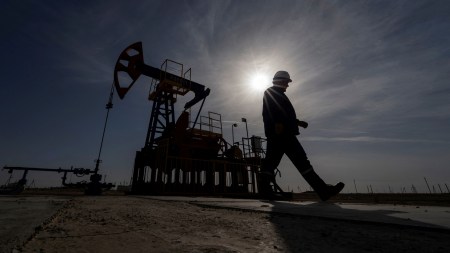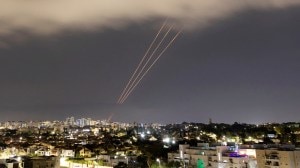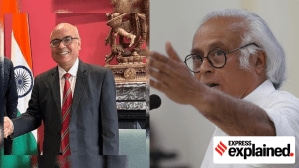- India
- International
Last Islamic State village in Syria falls, caliphate crumbles
In the last weeks, the militants’ families fled for their lives, their black-clad wives streaming into the desert by the tens of thousands. Some of them defiantly chanted Islamic State slogans and lobbed fistfuls of dirt at reporters.
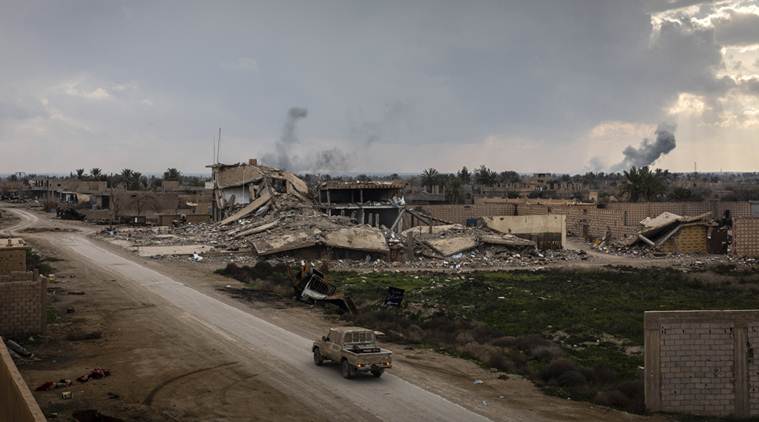 After a gruelling campaign, the last speck of land was finally wrested from the Islamic State, also known as ISIS. (Ivor Prickett/The New York Times)
After a gruelling campaign, the last speck of land was finally wrested from the Islamic State, also known as ISIS. (Ivor Prickett/The New York Times)
Written by Rukmini Callimachi
A four-year military operation to flush the Islamic State from its territory in Iraq and Syria ended Saturday as the last village held by the terrorist group was retaken, erasing a militant theocracy that once spanned two countries.
Cornered in Baghuz, Syria, the last 1.5-square-mile remnant of the group’s territory in the region, the remaining militants waged a surprisingly fierce defense and kept the U.S.-backed coalition at bay for months.
They detonated car bombs and hurled explosives from drones. Suicide bombers ran across the front line under cover of darkness to attack the sleeping quarters of the coalition.
In the last weeks, the militants’ families fled for their lives, their black-clad wives streaming into the desert by the tens of thousands. Some of them defiantly chanted Islamic State slogans and lobbed fistfuls of dirt at reporters.

But after a grueling campaign, the last speck of land was finally wrested from the Islamic State, also known as ISIS.
“This is a big moment not just for us but for all of the world,” said Kino Gabriel, a spokesman for the Syrian Democratic Forces, which led the operation. “But we cannot say that ISIS is finished. It is true that they are finished on the ground as a standing army. But the ISIS threat remains around the globe.”
Secretary of State Mike Pompeo, on a trip to Beirut, told reporters that the battle against extremists will go on after the territorial defeat of ISIS.
“Our mission there hasn’t changed. We still have work to do to make sure radical Islamic terrorism doesn’t continue to grow,” he said.
At its zenith four years ago, the Islamic State ruled a chunk of territory the size of Britain and controlled the lives of up to 12 million people.
Read | The Islamic State group’s self-styled caliphate is gone, but the threat it poses remains
It captured major population centers, including Mosul, the second-largest city in Iraq. Its dominion extended east into the plains of Nineveh in Iraq, an area mentioned in the Bible where the extremist fighters used the walls of ancient churches for target practice. It reached south to the Syrian ruins of Palmyra, whose majestic pillars became a backdrop for gruesome beheading videos.
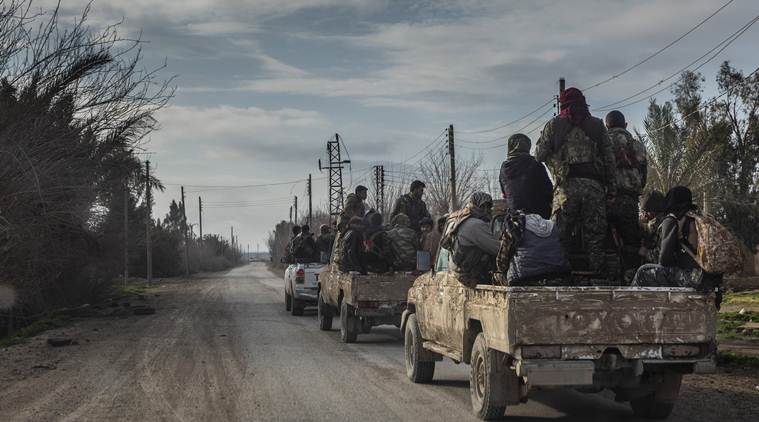 The fall of Baghuz caps a four-year military operation against a so-called caliphate that once controlled the lives of up to 12 million people. But signs of the Islamic State group’s resurgence are already visible. (Ivor Prickett/The New York Times)
The fall of Baghuz caps a four-year military operation against a so-called caliphate that once controlled the lives of up to 12 million people. But signs of the Islamic State group’s resurgence are already visible. (Ivor Prickett/The New York Times)
In between, it seized land that accounted for 75 percent of Syria’s cotton crop, 40 percent of Iraq’s wheat production and over 50 percent of its barley fields, as well as hydroelectric dams, phosphate mines and oil fields.
While the Islamic State lives on as a diffuse insurgency that commands thousands of followers from Afghanistan to the Philippines, the loss of the biggest territory it controlled is a blow. The group lost the most visible prototype of what it envisioned as a global caliphate, or religious empire, a gleaming beacon that helped recruit tens of thousands of fighters from around the world and an ominous nightmare that frightened the rest.
Its vast territory allowed it to do something no other terrorist group had done: By taxing the millions under its rule and exploiting the area’s natural resources, the Islamic State raked in billions of dollars, becoming the world’s richest terrorist organization.
It used that wealth to finance its global ambitions. The militants built a war machine, including industrial-scale mortar production and a drone program that modified off-the-shelf technology to carry explosives.
It invested in its nascent state, providing services like vaccination drives and trash collection that, at times, rivaled those of the governments they had usurped. This was one of the selling points it used to lure new recruits.
The cities and towns it held allowed the group to embed prisons, training camps and administrative offices in civilian population centers, protecting them from airstrikes under international norms of warfare.
The state it built, ostensibly modeled on the one established by the Prophet Muhammad in the 7th century, was both brutal and bureaucratically efficient. Women flogged for showing so much as their eyes were issued receipts by the morality police. Teenage boys imprisoned for the crime of “making fun during prayer” were served with arrest warrants. Thousands of women belonging to the Yazidi faith, which the Islamic State considers heretical, were sold into sexual servitude, their rape endorsed by an Islamic court with a stamped contract.
By nearly every metric, the Islamic State is now a diminished force compared to its height four years ago: It has far fewer fighters and far less land, and the number of attacks it carries out worldwide has nose-dived.
And by all accounts, life in Baghuz as it was besieged these last few weeks was bleak.
“Ask me, when is the last time I had an egg? One year ago,” said Amy, a 34-year-old Canadian woman who fled the village recently and gave only her first name. She had left her job as a graphic designer in Alberta with her two toddlers to join her husband inside the caliphate.
“I just want to go home and have the biggest Tim Hortons coffee,” she said, referring to the Canadian coffee shop chain.
But those who have tracked the group since it took root in Iraq in the early 2000s point out that even after losing its land, the group is far stronger today than it was the last time it was considered defeated — in 2011, the year U.S. troops pulled out of Iraq.
The militants were down to their last 700 fighters then. Now, U.S. and Iraqi officials estimate that the group still has thousands of fighters and tens of thousands of adherents, dispersed across Iraq and Syria.
Signs of the group’s resurgence are already visible.
In the first 10 months since Iraq’s prime minister at the time, Haider al-Abadi, declared victory over the militants in neighboring Iraq, the group carried out 1,271 attacks there, according to Michael Knights of the Washington Institute for Near East Policy.
In the weeks since President Donald Trump claimed victory over the Islamic State in December, the militants have claimed at least 182 attacks in Syria, killing and wounding 620 people, according to Charlie Winter, a senior research fellow of the International Center for the Study of Radicalization at King’s College London.
“There is a tendency to rush into declarations of victory too fast and too early with jihadist groups,” Winter said. “It may be weaker in the immediate term, but there is not a chance in hell that it has been defeated.”
Even the commanders who helped free Baghuz caution that this is simply the end of one phase of the conflict and the start of another.
Liberating the cities and towns held by the Islamic State was the easy part, said Adnan Afrin, a commander with the U.S.-backed Syrian Democratic Forces. “When we go to the front lines, we face them,” he said. “We shoot them, they shoot back. We know who is in front of us.”
“But behind us are sleeper cells,” he added. “The fight against the enemy you cannot see is much harder.”
While many may describe the fall of Baghuz as the end of Islamic State’s project, the group’s ambitions were always global, with nearly half of its “provinces” overseas. Even as the territory it holds in Iraq and Syria has dwindled to zero, the group’s franchises abroad are growing, experts say.
In January, back-to-back detonations claimed by the Islamic State’s local affiliate killed at least 20 people in the Philippines. In Afghanistan, the group continues to mount deadly attacks, despite the United States dropping, in 2017, what it called the “mother of all bombs” on a cave complex used by the militants.
The military operation to dislodge the Islamic State came at a heavy price. The western half of the city of Mosul, most of the Syrian city of Raqqa and numerous others wrested from the militants along the way are in ruins.
The 19-mile stretch of road from Hajin, where the operation to remove ISIS from its last remnant of Syrian territory began last September, to Baghuz, is a scene of catastrophic destruction. Nearly every building is crushed or scarred. Craters, some large enough to swallow a tanker truck, mark the spots where 500-pound bombs made landfall.
“Why did they have to destroy all of Hajin?” asked Faisal Wuhaib Awad, 42, who owned a bakery there. “This was our livelihood. We went and looked and didn’t find a single ISIS body there. No weapons. Not even a single bullet. So how can they say that this was an ISIS hideout?”
Syria remains mired in a civil war in which the battle against the Islamic State is only one conflict among many. The future of the land the group once held there, about a third of the country, is uncertain with the United States promising to withdraw its troops.
On both sides of the border, the victors are wrestling with justice for the losers.
Thousands of fighters are locked in prisons while tens of thousands of women and children are held in detention camps. Most of the foreigners who flocked to the caliphate risk becoming stateless, unwanted by the countries they fled and considered enemy combatants by the countries they’re in.
The number of detainees has surged in recent weeks with up to 37,000 people arriving from Baghuz since February, according to the International Rescue Committee. A majority of them are women and children, and officials say nearly all are the families of ISIS members.
Those who have spoken to reporters have oscillated between acknowledging the group’s losses and insisting that such losses were only temporary.
“It’s getting smaller,” said Dure Ahmed, 28, from Toronto. “Much smaller. But a lot of people still have hope that one day it will flourish back.”
It was a sentiment echoed by Salam Abid, who spent 4 1/2 years in the caliphate, fleeing only after 20 members of his family were killed in an airstrike.
“Maybe the group will be defeated in Syria, but not elsewhere,” he said, speaking through the bandages covering his burned face. “Sure, in Syria, they are down to nothing, but in the deserts of Anbar, they live on. And in Asia and in Africa, they are still fighting.”
Apr 19: Latest News
- 01
- 02
- 03
- 04
- 05





